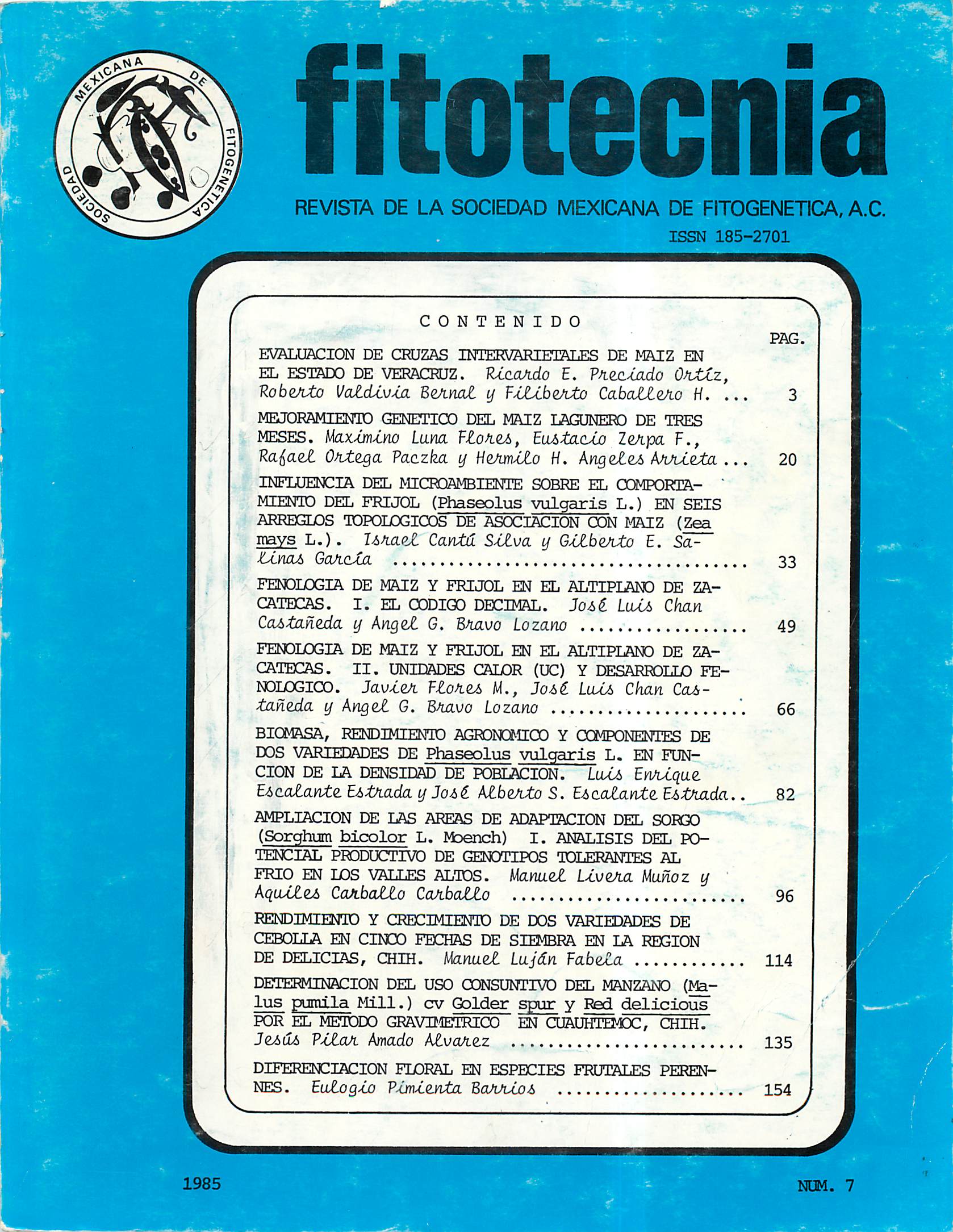INFLUENCE OF THE MICROENVIRONMENT ON THE BEHAVIOR OF THE BEAN (Phaseolus vulgaris L.) IN SIX TOPOLOGICAL ARRANGEMENTS OF ASSOCIATION WITH MAIZE (Zea -mays L.)
Main Article Content
Abstract
Six space distributions of bean plants intercropped with maize were compared with respect to their crop growth and grain yield, in the lowland regions of Nuevo Leon, México, where high temperatures during the spring season appear to be a limiting factor for bean grain yield.
Maximum and minimum temperatures were recorded daily at 8:00, 12:00 and 17:00 hours, as environmental variables. P1ant height, leaf number and leaf area were measured in maize plants at diferent growth stages,
as indices of shading on bean plants.
Morphological yield components of both maize and beans were estimated, as well as some agronomic characters. Additionally, a dry matter accumulation analysis was conducted in bean plants, based on samples taken through the plant development.
The results indicated that a sizeable economical yield of bean is obtained when it is intercropped with maize, whereas the production of beans alone is null. These results might be accounted by a temperature reduction observed around the bean plants in associated cropping, and by the reduced effects of biotic (Empoasca sp.) and abiotic (hailstones) factors on the bean plants when intercropped with maize.
On the other hand, these space distrfbutions had no significant effects on maize plants.

